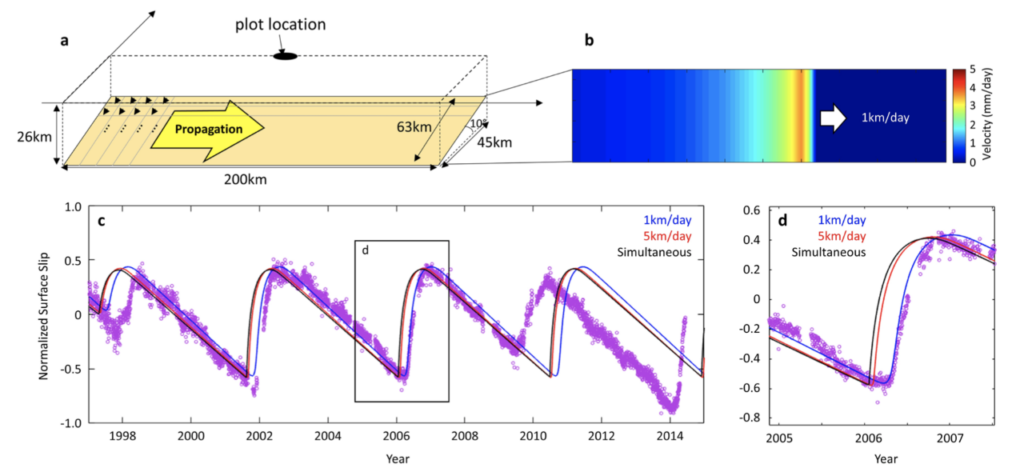
In a new Nature Geosciences paper, Im, Saffer, Marone, and Avouac report on computer models that incorporate laboratory measurements from natural fault rocks to study fault slip and rupture behavior. They show that the frictional properties of these natural fault rocks can explain the spectrum of slip behavior observed on tectonic faults that spans from slow slip that unfolds over weeks to months to seismic rupture lasting seconds to minutes. Their results offer a unifying physical mechanism for the ubiquitous occurrence of slow earthquakes and slow slip phenomena in a wide range of depths in the crust and in varied geological settings.
Read the paper here: Slip-rate-dependent friction as a universal mechanism for slow slip events
